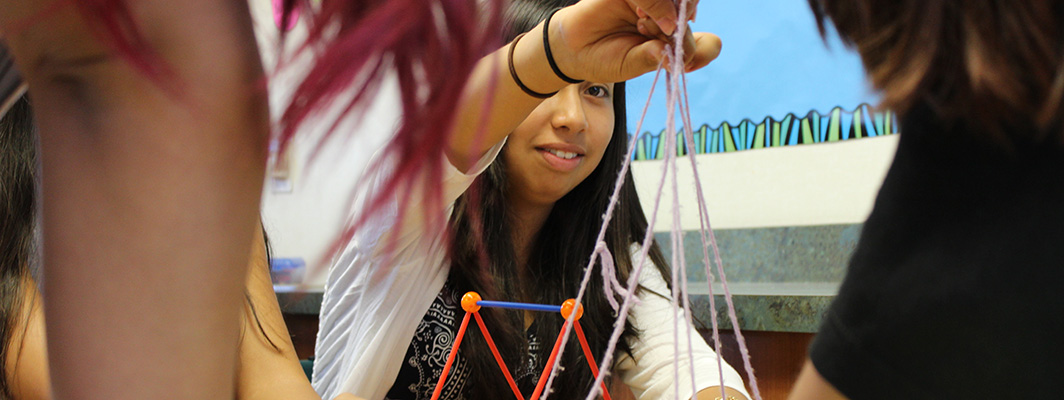
We’ve gathered five insights about effective Challenge Based Learning (CBL) in middle school science, informed by 18 teachers who participated in the Challenge Based Science Learning Project, a project funded by the William and Flora Hewlett Foundation. The teachers asked their students to lead their own learning within the context of the Next Generation Science Standards (NGSS).
After creating and implementing challenge based science lessons, teachers commonly recognized the importance of allowing for student discovery. Inviting students to solve challenges can engage them to learn science in deeper, more personal ways. It can also be enjoyable for the teacher, allowing them to uncover new aspects of students. As one teacher put it: “I just really like the fact that they get to do their own thing. … It was neat to see what they came up with.”
Hands-on exploration is where the student learning needs to occur, rather than serving as simply a “fun” phase that can be referenced in the future for more instructional learning. One teacher, after seeing that even her top students weren’t able to transfer the concepts she thought they should have learned from their labs and notes, took two additional periods to have students solve a mini-challenge about earthquakes. She said, “It takes longer, but I think they learn better that way.” Another teacher’s “a-ha” moment happened when her class seemed to intuitively understand “balanced force” after their exploratory investigation using helium balloons:
I think a lot of teachers would say, “Well, why can’t I just stand in front of the classroom and tell them what this is?” But I think walking away long term, [when they explored the concept] they’re going to keep that knowledge a little longer having had to figure that out themselves instead of me just [dictating] it to them.
Engaging middle schoolers on a science topic and encouraging them to ask questions about it can be difficult for teachers, especially if they’ve never taught in this way before. Some teachers initially worried about whether they could be quick enough on their feet to respond to unanticipated questions, or whether students would move towards a productive direction with their questioning and carry things out on their own. But even if facilitation is uncomfortable at first, it becomes easier with practice. As one teacher shared, “My first period class, they get all my stumbles. And then by the time I get to the afternoon, it’s a lot better.”
While it’s important for teachers to go with the flow, this doesn’t mean letting students do whatever they want. If students head in a direction the teacher likes, the teacher can go with it and the learning is that much more powerful. But if the students head toward an unproductive direction, teachers can redirect them towards a more constructive next step. Teachers can use a variety of guiding methods without being prescriptive, including highlighting student questions or comments that were particularly aligned with the science learning goals, creating check-ins to catch students before they were too lost, and adding their own questions in ways that would nudge students toward more productive directions.
Teachers constantly wrestled with how much freedom to provide their students, and how much they should guide or scaffold. Often, keeping lessons more open-ended worked very well, but students need some amount of structure, especially when they’re new to solving challenges in class. Many teachers found a balance by having some standard requirements within that freedom—for example, by requiring students to research a core set of questions in addition to their own, or providing some research activities that everyone must try. As students become more familiar with the process of driving their own learning, these requirements can be loosened.
To learn more about integrating a CBL approach, check out the Challenge Based Science Learning Toolkit and find a variety of resources, including templates, rubrics, and the full research report.